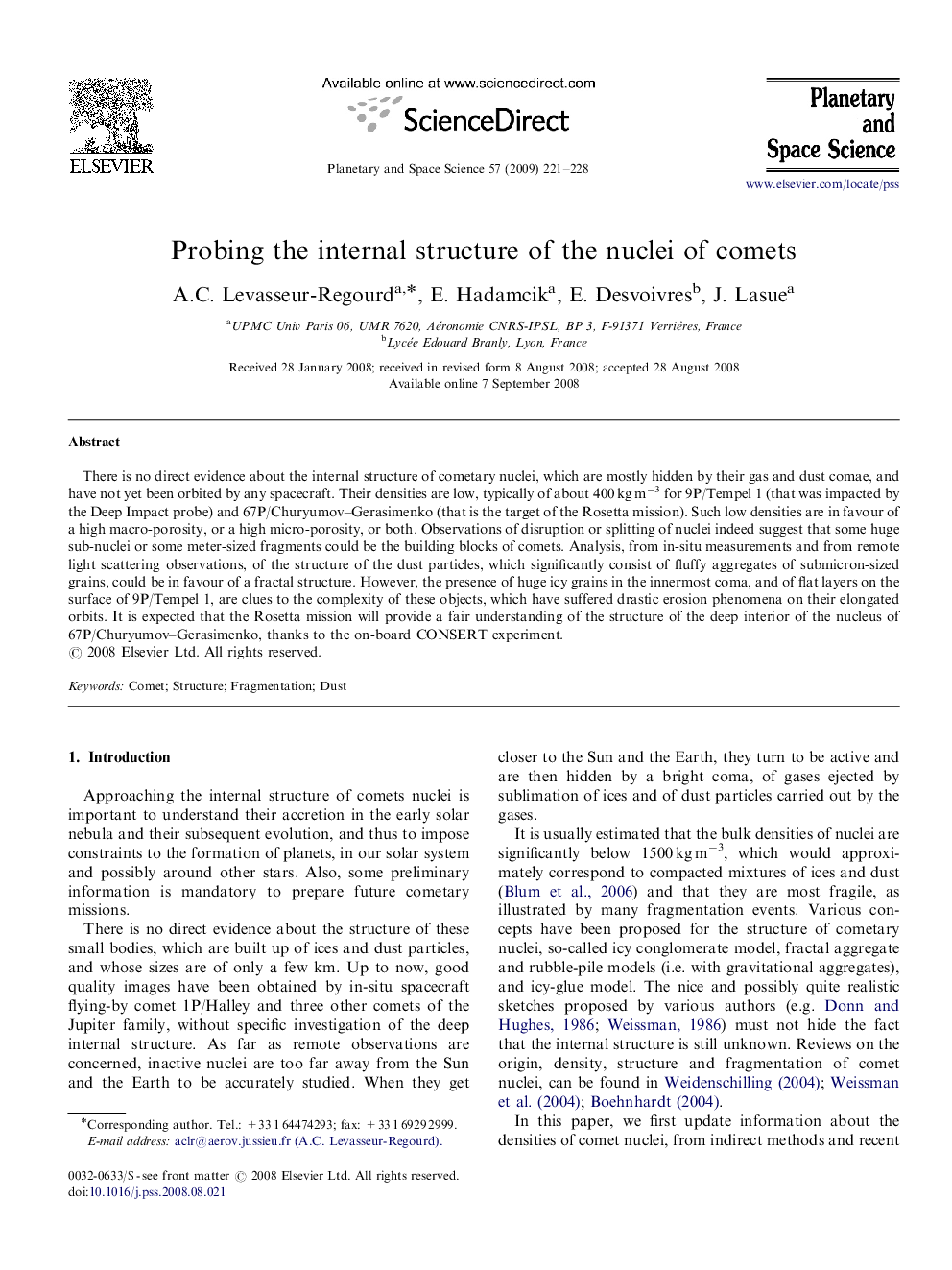| Article ID | Journal | Published Year | Pages | File Type |
|---|---|---|---|---|
| 1782422 | Planetary and Space Science | 2009 | 8 Pages |
There is no direct evidence about the internal structure of cometary nuclei, which are mostly hidden by their gas and dust comae, and have not yet been orbited by any spacecraft. Their densities are low, typically of about 400 kg m−3 for 9P/Tempel 1 (that was impacted by the Deep Impact probe) and 67P/Churyumov–Gerasimenko (that is the target of the Rosetta mission). Such low densities are in favour of a high macro-porosity, or a high micro-porosity, or both. Observations of disruption or splitting of nuclei indeed suggest that some huge sub-nuclei or some meter-sized fragments could be the building blocks of comets. Analysis, from in-situ measurements and from remote light scattering observations, of the structure of the dust particles, which significantly consist of fluffy aggregates of submicron-sized grains, could be in favour of a fractal structure. However, the presence of huge icy grains in the innermost coma, and of flat layers on the surface of 9P/Tempel 1, are clues to the complexity of these objects, which have suffered drastic erosion phenomena on their elongated orbits. It is expected that the Rosetta mission will provide a fair understanding of the structure of the deep interior of the nucleus of 67P/Churyumov–Gerasimenko, thanks to the on-board CONSERT experiment.
